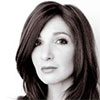The Year of the Ruble
To see my first take on the Russian ruble and the economy for 2017 click here.
Last year, the Russian ruble appreciated about 21 percent against the dollar. The currency had fallen 55% against the dollar over 2014 and 2015 during the height of the Ukraine situation and sanctions.
But the ruble outperformed all other emerging market currencies for 2016. Even with that 2016 rally, Radio Free Europe, the U.S. government-funded media outlet, believes the ruble is the currency to watch in 2017.
Part of this is thanks to Elvira Nabiullina, head of the Russian central bank. While other key central bankers followed the Fed, Nabiullina, was able to distinguish herself in the international community. She was named central bank governor of the year by Euromoney magazine in 2015.
Even IMF chief, Christine Lagarde praised Nabiullina this past December for doing “a fantastic job” with Russia’s financial problems, particularly with inflation.
Nabiullina was named the best central banker in Europe for 2016 by the prestigious international financial publication, The Banker. The magazine noted that she had “helped steer the country through the difficulties,” and Russia is “set to return to economic growth in 2017.”
Under Nabiullina’s tutelage, consumer price inflation, which began 2016 at a rate of 12.9%, dropped to below 6% by the end of 2016.
In addition, The Economist also noted that “corporate profits rose by 50% last year as the ruble value of foreign earnings jumped.” As a result, companies have plenty of cash to invest. If they are anything like U.S. companies, they will buy back their own shares with cheap money and debt to bolster their stock market with the extra cash.
The Russian Ruble and The MICEX Stock Market Index
Russia’s stock market index rallied 24% in 2016, surpassing the performance of most developed nations.
The RTS index (a capitalization-weighted index of 50 major Russian stocks denominated in the U.S. dollars) gained 50.4 percent in 2016—rising 18.4 percent in the time between the U.S. election and the end of 2016.
There’s every reason to assume these trends will continue. On Jan. 9, even ace investor Jim Rogers expressed optimism on Russia. He suggested that with U.S. stock markets at all-time highs, it’s time to consider more undervalued markets. He believes relations between the U.S. and Russia will improve under Trump, and that there’s a chance the sanctions on Russia could be lifted or eased.
Russia boasts a winning combination of relatively high interest rates (at 10%) that would attract bond investors, a positive geo-political outlook, a growing sphere of influence in its region, and a sweet-spot between the U.S., Europe and China.
As I noted in my 2017 outlook, Russia supplies nearly one-third of the EU’s natural gas, but it has also begun clean energy initiatives through the BRICS development bank and other platforms, a strategic diversification.
All this translates into positive capital inflows into Russia’s businesses, economy and stock market.
That’s why the ruble should outperform the euro and the pound sterling, and the MICEX index of Russian stocks will rise. As Trump assumes the White House and strengthens U.S. ties to Russia, many investors should be presented with a good opportunity to take advantage of Russia’s gain.
Russian companies are undervalued now. Western investors are returning to the Russian market, pursuing cheap stocks in a world of expensive stocks.
Even if the U.S. dollar strengthens on potential rate hikes or an expanding of the US economy, the interest rate differential relative to Russia is wide enough to push investment capital into Russia relative to US markets and firms.
Regards,
Nomi Prins, @nomiprins
for The Daily Reckoning


Comments: